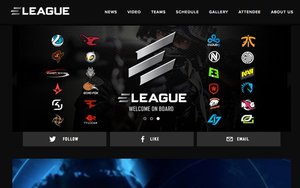electronics
ESports Audiences More Than Meets The Eye
- by Aaron Baar , June 14, 2016

As marketers look to connect with customers through the growing world of eSports, many are wondering what the true audience looks like, and what their role might be in it.
“Marketers are starting to understand eSports is a legitimate competitive sport in its own right, and they’re beginning to treat it as such,” Joshua Spiegelman, managing director of the Mindshare North America’s sports and entertainment partnerships unit, Mindshare Spotlight, tells Marketing Daily. “Because eSports is still developing, it’s a lot more fragmented [than other sports]. It’s a lot more challenging to navigate when you have multiple leagues and game publishers.”
Using its proprietary research tool The Pool, the agency has uncovered a wealth of information about the audience and the best ways for marketers to get in on the ground floor of the growing recreation activity.
advertisement
advertisement
As with any marketing opportunity, knowing your audience is key. ESports skews heavily toward Millennials (nearly two-thirds of fans are between 18 and 34 years old), which shouldn’t really be surprising. However, they skew to the older end of that demographic, with 60% of fans between 25 and 39 years old. (Plus, some 38% of fans are women.)
They’re also more affluent than what one might expect. Nearly a third (31%) of fans have a household income of $90,000 per year or higher, and more than half (58%) have kids in their home.
Perhaps of particular interest to marketers is how passionate eSports fans are. Nearly half (49%) said they spend most of their free time around e-Sports (which skews even higher among the more affluent fans), and 60% are willing to travel to see their favorite games, tournaments and players.
It’s also a deeply social experience. Two-thirds of fans said they have made new friends or acquaintances through the games, and roughly half of fans who watch eSports through a gaming console and/or YouTube say they like to watch with friends or family in the same room.
“These are guys who [gathered] in their dorm rooms watching their friends play ‘Goldeneye,’” Spiegelman says. “A lot of people think this is a solitary experience. We’ve found it’s a deeply social experience.”
They also feel close to the players and teams. Sixty-one percent say they see eSports players and teams as moderate or major celebrities wielding influence.
As fans of a fledgling sport, eSports fans are also surprisingly welcoming of brand sponsorships, particularly if they can improve the gaming experience by giving away free merchandise, demo-ing new games and maps, providing customized in-game experiences and facilitating meetings with favorite teams or players.
“They’re appreciative of brands when they show they know or understand their culture,” Spiegelman says. “They feel their part of the underbelly and experience of helping these players reach their potential.”
Many of these things may be easier for marketers already attuned to eSports, but for those looking to get in before the market becomes saturated, Spiegelman had one overarching tip: respect the experience.
“The most important principle for brands that are new is to activate in an authentic way that provides value,” he says. “They need to activate in a manner that’s more than 30-second ads. They need to act in a way that is additive to the experience. If they do that, there won’t be any backlash.”




